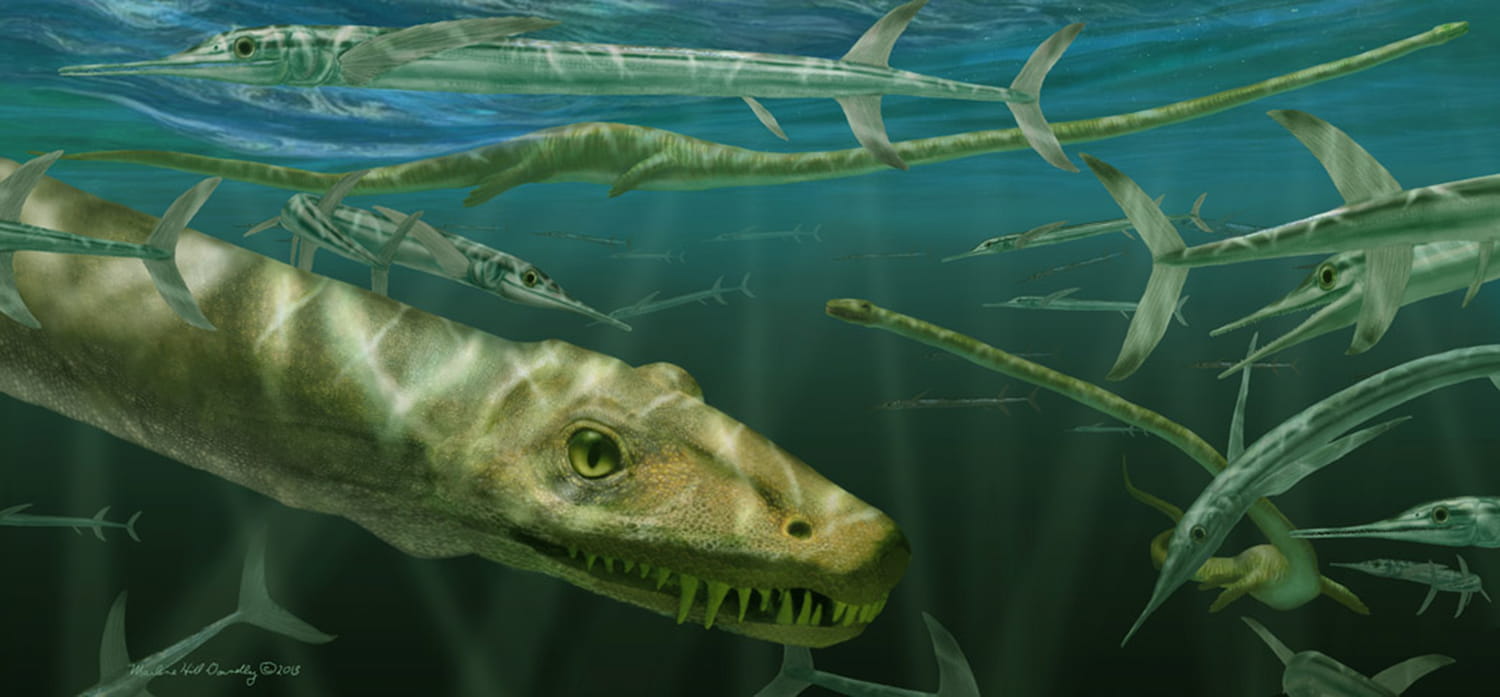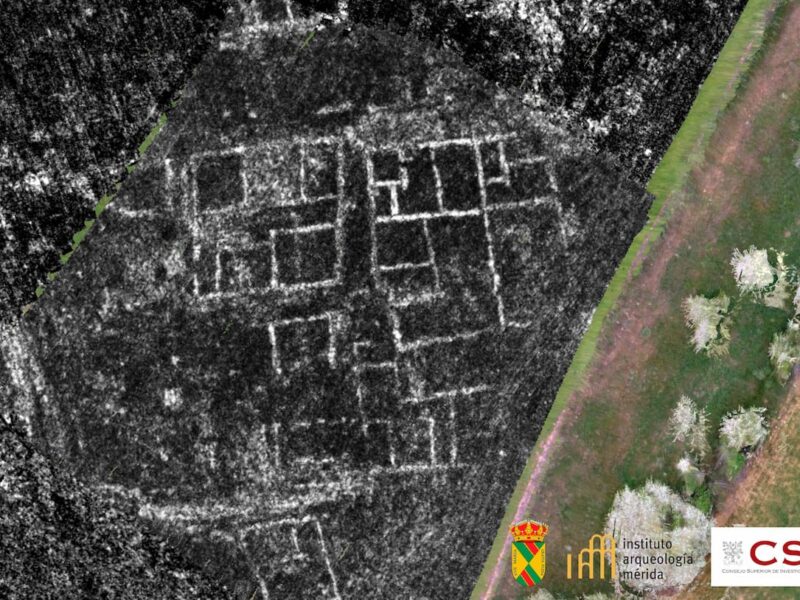Scientists have unveiled a remarkably complete fossil of a specialized reptile named Dinocephalosaurus that swam the oceans 240 million years ago during the Triassic Period. This bizarre creature measured over 16 feet long and boasted an extremely elongated neck containing 32 individual vertebrae – more than any other known species from the Triassic. This enabled the Dinocephalosaurus to strike prey rapidly, much like modern snakes.
The fossils were discovered in southern China’s Guizhou Province. This discovery allows us to fully visualize this extraordinary long-necked ancient animal for the first time, stated Dr. Nick Fraser of Scotland’s National Museums. It’s another example of the weird and wonderful Triassic world that continues to puzzle paleontologists.
Despite a superficial resemblance to mythic Chinese dragons, this reptile was a sophisticated ocean predator exquisitely adapted to its marine environment. Paddle-like limbs enabled powerful swimming while its freakishly long neck, making up over half the creature’s length, enabled lightning fast strikes to snare passing fish and squid. Several perfectly preserved fish fossils were found fossilized in the animal’s stomach region, confirming this hunting strategy.

The animal’s lengthy neck actually surpasses that of a close relative, Tanystropheus, another bizarre long-necked reptile known from both Triassic age Europe and China that perished roughly 40 million years earlier. While longer, Dinocephalosaurus had considerably more vertebrae in both the neck and trunk than Tanystropheus, giving it a much more serpentine appearance overall.
Dinocephalosaurus was first identified in 2003, but the discovery of multiple new specimens including an unprecedented completely articulate fossil has finally enabled scientists to fully describe this unique long-necked animal. An international team studied the fossils for over a decade at the Beijing-based Institute of Vertebrate Paleontology and Paleoanthropology.
Lead author Professor Li Chun remarked, In collaboration with colleagues from the United States, United Kingdom and Europe, we’ve used these newly discovered specimens preserved at the Chinese Academy of Sciences to expand our knowledge about this creature. Among all the extraordinary Triassic discoveries from Guizhou, Dinocephalosaurus probably stands out as the most remarkable.

New postdoctoral researcher Dr. Stephan Spiekman, based at the Stuttgart State Museum of Natural History, added As an early career scientist, it’s been an incredible experience helping reveal these important new insights. We hope further investigations will uncover more about the evolution and function of this group’s extraordinary elongated necks.
Detailed findings have been published in the academic journal Earth and Environmental Science: Transactions of the Royal Society of Edinburgh. Editor-in-Chief Professor Robert Ellam said, This amazing marine reptile is yet another example of the impressive fossils continuing to emerge from China’s ancient rocks.
While not directly ancestral, Dinocephalosaurus and Tanystropheus represent an evolutionary experiment in extremely elongated necks tens of millions of years before the appearance of the iconic long-necked plesiosaurs that lived alongside dinosaurs and may have inspired Scotland’s mythical Loch Ness Monster.
Sources
National Museums Scotland | Spiekman SNF, Wang W, Zhao L, Ripple O, Fraser NC, Li C. Dinocephalosaurus orientalis Li, 2003: a remarkable marine archosauromorph from the Middle Triassic of southwestern China. Earth and Environmental Science Transactions of the Royal Society of Edinburgh. Published online 2024:1-33. doi:10.1017/S175569102400001X
Discover more from LBV Magazine English Edition
Subscribe to get the latest posts sent to your email.




















